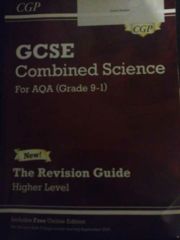![]()
![]()
![]()
Use LEFT and RIGHT arrow keys to navigate between flashcards;
Use UP and DOWN arrow keys to flip the card;
H to show hint;
A reads text to speech;
24 Cards in this Set
- Front
- Back
- 3rd side (hint)
|
Define pathogen: |
A microorganism that enter the body and cause disease |
|
|
|
Which type of disease is transmitted by a vector? |
Protist |
|
|
|
Name three ways pathogens can be spread: |
1. Water 2. Air 3. Direct contact |
|
|
|
Which types of pathogens are eukaryotes? |
Protists |
|
|
|
Name three viral diseases and explain how spread + symptoms: |
1. Measles - spread by droplets, symptoms include red skin rash and fever. Normally vaccinated against
2. HIV - spread by sexual contact, causes flu like symptoms. Attacks your immune cells, stops your body from dealing with other illnesses 3. Tobacco mosaic virus - effects plants, makes them become discoloured stopping them from photosynthesising |
1. Causes red skin rashes 2. STD 3. Plant illnesses |
|
|
Name 2 types of fungal disease and expand on the plant one: |
1. Athletes foot 2. Rose black spot - causes blank spots , then turn yellow and makes the leave fall off. Spread by water or wind |
|
|
|
What type of disease is malaria and what are the symptoms? |
Spread by mosquitoes (vectors) which they pick up when the feed on an infected animal. Cause repeated episodes of fever which can be fatal |
|
|
|
Name two bacteria diseases and expand: |
1. Salmonella - causes food poisoning. Get it from eating contaminated food, symptoms include fever, stomach cramps. 2. Gonorrhoea - STD. Symptoms include pain while urinating or thick green discharge. Originally treated with penicillin but now some had become resistant. |
|
|
|
Name 3 (4)things that can reduce or prevent the spread of disease: |
1. Being hygienic - washing hands and stuff 2. Destroying vectors - destroy their habitats or use insecticides 3. Isolating infected individuals - quarantining and that, stops them passing it on 4. Vaccination - can't develop or pass it on. |
|
|
|
Name the 4 stages (and what they do) of your body's defence system: |
1. Skin - acts as a barrier, also secretes antimicrobial substances which kill pathys 2. Nose - Hair and mucus trap particles that could contain pathys 3. Trachea and bronchi - secrete mucus to trap pathys, and lined with cilia that waft mucus up to throat to be swallowed 4. Stomach - contains HCL that slaughters pathys that make it that far |
|
|
|
Give 3 ways your immune system can attack pathogens : |
1. Consuming them - called phagocytosis, where WBC engulf and digest pathogens. 2. Produce antibodies - every invading pathogen has unique antigens , antibodies fit the shape (lock and key) and destroy it 3. Produce antitoxins - counteract toxins from invading bacteria |
|
|
|
Why do vaccinations work? |
Because your body produced the antibody and stores it and therefore if you ever get the pathogen again your body is ready |
|
|
|
2 pros and cons to vaccination : |
Pro 1. Help control communicable diseases 2. Epidemics can be prevented if large percentages of population is vaccinated Cons 1. Don't always work 2. Bad reaction to the injection |
|
|
|
What's the difference between painkillers and antibiotics: |
Painkillers only relieve pain or symptoms. Antibiotics kill/prevent growth of bacteria. |
|
|
|
What type of pathogen can't antibiotics destroy? |
Viruses |
|
|
|
How do bacteria become resistant to antibiotics and name an example: |
If they survive the antibiotic and mutate then they can no longer be treated by them. This happens if you don't finish your doses (continue as long as doctor says). MRSA |
|
|
|
Explain 2 ways to stop bacteria becoming resistant to antibiotics: |
1. Don't over prescribe them 2. Finish your prescription |
|
|
|
Why do some drugs come from plants? |
Plants need to defend themselves from pests and pathogens |
|
|
|
Name the person who discovered penicillin and how? |
Alexander Fleming - clearing petri dishes that contained bacteria, a moulded area was clear of it. Mould was penicillin |
|
|
|
Name the three main stages of drug testing: |
1. Testing on human cells/tissues (can't happen if you need something that requires a whole body e.g. blood pressure) 2. Test on live animals 3. Healthy human volunteers |
|
|
|
Define: Efficacy Toxicity Dosage |
Efficacy - whether the drug works and if it produces the desired effect Toxicity - how harmful it is Dosage - concentration and how often |
|
|
|
What's the point in peer reviewing a drug trial? |
To prevent false claims |
|
|
|
What's a double blind and what's the point in it? |
Where both patient and doctor don't know whether the drug is real or not. To allow for the placebo effect and so doctors analysing isn't subconsciously influenced |
|
|

|
:) |
|

